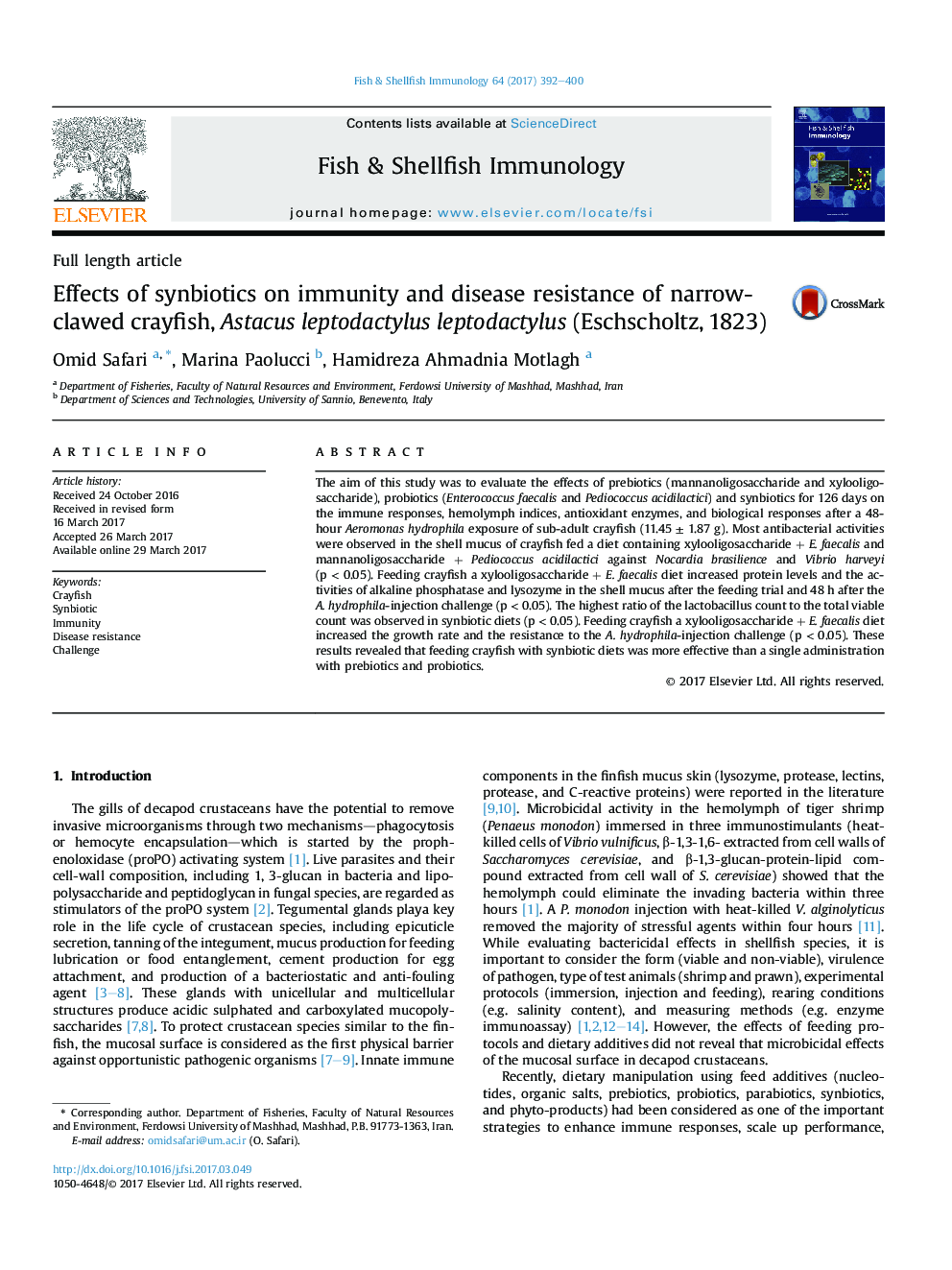| Article ID | Journal | Published Year | Pages | File Type |
|---|---|---|---|---|
| 5540528 | Fish & Shellfish Immunology | 2017 | 9 Pages |
â¢Crayfish fed the XOS + EnF- and MOS + PeA diets showed the highest antibacterial activity in shell mucus.â¢Feeding crayfish with synbiotics increased lysozyme activity.â¢Feeding crayfish with synbiotics increased the resistant stress against A. hydrophila injection.
The aim of this study was to evaluate the effects of prebiotics (mannanoligosaccharide and xylooligosaccharide), probiotics (Enterococcus faecalis and Pediococcus acidilactici) and synbiotics for 126 days on the immune responses, hemolymph indices, antioxidant enzymes, and biological responses after a 48-hour Aeromonas hydrophila exposure of sub-adult crayfish (11.45 ± 1.87 g). Most antibacterial activities were observed in the shell mucus of crayfish fed a diet containing xylooligosaccharide + E. faecalis and mannanoligosaccharide + Pediococcus acidilactici against Nocardia brasilience and Vibrio harveyi (p < 0.05). Feeding crayfish a xylooligosaccharide + E. faecalis diet increased protein levels and the activities of alkaline phosphatase and lysozyme in the shell mucus after the feeding trial and 48 h after the A. hydrophila-injection challenge (p < 0.05). The highest ratio of the lactobacillus count to the total viable count was observed in synbiotic diets (p < 0.05). Feeding crayfish a xylooligosaccharide + E. faecalis diet increased the growth rate and the resistance to the A. hydrophila-injection challenge (p < 0.05). These results revealed that feeding crayfish with synbiotic diets was more effective than a single administration with prebiotics and probiotics.
